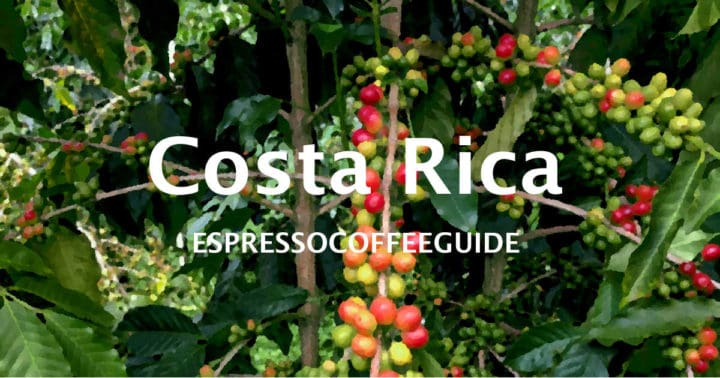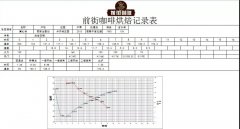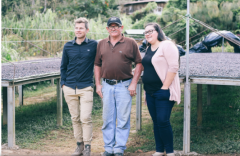Costa Rican Mozart Coffee H1 beans History Story hand-brewed Mozart Coffee
Costa Rican coffee has always been a favorite of guests on the front street. The musician series is even better, and the Mozart coffee variety from Tara Sukanette Manor is H 1. So how on earth did the H1 coffee bean come from?
According to the world coffee research, H1 coffee from Central America has very high yield and good quality potential. It is very suitable for agriculture and forestry. H1 is a small coffee tree with green leaf tips. The size of coffee beans is medium to high.

T5296 x Rume Sudan Red
Genetic information description: F1 hybrid (infiltration) history
The first generation (F1) hybrid was derived from the cross between rust resistant T5296 and Ethiopian local variety Rum Sudan. Centroamericano is resistant to coffee leaf rust and has a very high yield (22-47% higher than the standard variety in Central America in breeding evaluation). Centroamericano has also been shown to have excellent cup quality potential when well managed at high altitudes. It was released to farmers in Central America in 2010.
The variety was created by consortia including the French research institute CIRAD, the Regional Network of Central American Coffee institutions (PROMECAFE) and the Costa Rican Coffee Gene Bank (CATIE). F1 hybrids in Central America are part of breeders' efforts to increase the genetic diversity of varieties in the region because traditional American varieties are severely genetically restricted.
In general, F1 hybrid parents are selected to be genetically distant from each other; this distance maximizes hybrid vigor, which translates into high yield and overall vigor (for example, tolerance to frost) without reducing cup quality or disease resistance. There are only a few F1 hybrid coffee varieties in the world, most of which have been developed in the past 10 years and have not been sold to farmers until recent years.
Centroamericano H1 is a cross between Sarchimor T5296 and Rume Sudan. It is praised for its rust resistance and nearly 30% higher productivity than Caturra or Catuai, but they have all the precious flavor features that Costa Rican researchers first observed, testing early clones of F1 plants on experimental plots in ICAFE. ICAFE recommended this variety for Turrialba's native land, 4 where Aquiares Coffee achieved great success by using Central American coffee as part of its shade coffee agroforestry system.
So all Central American genes are Timor Arabica coffee, Timor Robsta coffee, mutated Costa Rican bourbon and wild rum sultan.

Qianjie uses a medium-shallow baking method to highlight his sweetness, using a segmented extraction method: first, use 30 grams of water to fully wet the powder and stew it in the shape of a hamburger for 30 seconds, and then cook in the second stage. The second stage of water injection in 55 seconds to 125 grams. Stop and wait for the water level to drop. In the third stage, the water is added to 225 grams at the timer of one minute and 40 seconds, and the total extraction time is 1 minute and 56 seconds.
Important Notice :
前街咖啡 FrontStreet Coffee has moved to new addredd:
FrontStreet Coffee Address: 315,Donghua East Road,GuangZhou
Tel:020 38364473
- Prev

Costa Rican musician series Mozart flavor taste describes the uniqueness of raisin honey treatment
First of all, Qianjie will introduce the musicians of Carnett Manor of Costa Rican Coffee. It is said that the coffee beans produced are named after classical musicians because the owner of Carnett Manor likes classical music very much. This is very interesting. Qianjie chose this bean not only because of its good coffee growing environment, Costa Rican coffee has
- Next

Brief introduction of small Candle Manor in Costa Rica how to make the excellent characteristics of Costa Rican rose summer coffee beans
In front of the Costa Rican Coffee Candle Manor, the washing rose summer has always been the white moonlight of rose coffee lovers, the price is not high and has a very excellent flavor: very strong aromas of white flowers and citrus, strong lemon acidity. The sweetness of honey and the sense of tea in the end make it a good bean. Qianjie is here to introduce Goss.
Related
- Detailed explanation of Jadeite planting Land in Panamanian Jadeite Manor introduction to the grading system of Jadeite competitive bidding, Red bid, Green bid and Rose Summer
- Story of Coffee planting in Brenka region of Costa Rica Stonehenge Manor anaerobic heavy honey treatment of flavor mouth
- What's on the barrel of Blue Mountain Coffee beans?
- Can American coffee also pull flowers? How to use hot American style to pull out a good-looking pattern?
- Can you make a cold extract with coffee beans? What is the right proportion for cold-extracted coffee formula?
- Indonesian PWN Gold Mandrine Coffee Origin Features Flavor How to Chong? Mandolin coffee is American.
- A brief introduction to the flavor characteristics of Brazilian yellow bourbon coffee beans
- What is the effect of different water quality on the flavor of cold-extracted coffee? What kind of water is best for brewing coffee?
- Why do you think of Rose Summer whenever you mention Panamanian coffee?
- Introduction to the characteristics of authentic blue mountain coffee bean producing areas? What is the CIB Coffee Authority in Jamaica?

